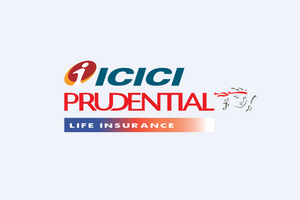Which Is better: FD Or PPF?
Table of Contents
The former’s goal is to prioritize the security of savings, while the latter chooses growth. Both Public Provident Fund (PPF) and fixed deposits (FDs) fall under the Fixed Instruments category. The question is: what investment instrument suits your financial needs? To facilitate your future investment planning, here are the differences between fixed deposits vs PPF.
Features of FD vs PPF
Fixed deposits are instruments where you can deposit a lump sum of money at a higher rate of interest (ROI) than a traditional savings account. The money will be locked in for a specific period of time, depending on the tenure of the policy. Once it is invested, the money deposited starts accumulating with the ROI for the duration of the policy. You can only deposit money in a fixed deposit account once. To deposit again, you need to open a new account.
The Public Provident Fund (PPF), on the other hand, is a government-based savings plan, for long-term investment planning. Unlike fixed deposit accounts, you only need to maintain one PPF account and pay annual premiums towards it. PPF is used as a retirement fund since its lock-in period is much higher than other tools.
Tenure of FD vs PPF
When it comes to PPF, the tenure of the policy is lengthy; typically, 15 years. There is no flexibility in the tenure which is guaranteed to be long. Hence, PPF is often used to accumulate savings for retirement. It is a safe option with guaranteed returns.
Alternatively, fixed deposits are very flexible with their tenure. With fixed deposits, investors have the freedom to choose between tenures that suit them. Policies for taking fixed deposits have tenures of 7 days to 10 years.
Rate of Interest on FD vs PPF
Investment planning often involves comparing the ROI for different financial instruments to know what will be more profitable. With FDs, the ROI is anywhere between 6% to 8% per year, depending on the bank chosen. Company FDs earn a higher ROI with 10% to 13% per year. PPF ROI is fixed by the government currently at 7.9% per year.
Partial Withdrawal with FD vs PPF
With long term instruments, the goal is to accumulate savings. Hence, the policy for withdrawing money is strict. PPF has a lock-in period of 5 years. No withdrawals are permitted until the specified period passes. Additionally, the amount that can be withdrawn with a PPF account is also limited.
There is more control with fixed deposits when it comes to withdrawing money. One can withdraw any amount whenever they need to. If one wants to close the account prematurely, they can.
Investment Amounts on FD vs PPF
Fixed deposits don’t tend to have a limit on how much one can invest in them. Since they are one-time lump sum payments, most people invest a large amount in an FD account to grow it. PPF, alternatively, has a limit of ₹1.5 lakhs per year as an investment amount.
Tax Benefits on FD vs PPF
Seeking out tax-reducing instruments is a crucial part of investment planning. Both FDs and PPF offer tax benefits under Section 80C of the Income Tax Act, but PPF offers more benefits. For FDs, after 5 years of lock-in, the amount invested in FDs can be claimed for deduction up to a limit of ₹1.5 lakhs.
The interest earned through FDs is taxable, ranging from 0–30% depending on which income tax bracket you fall under. On the other hand, PPF falls under Exempt-Exempt-Exempt (EEE) status. PPF offers deductions on deposit amounts up to ₹1.5 lakhs, no wealth tax, and tax-free returns.
Loan Facility on FD vs PPF
You can easily avail a loan on an FD. On cumulative FDs, the loan amount can be 75% of the deposit amount. With non-cumulative FDs, the loan amount is slightly lower, 60% of the total deposit amount. In the case of PPF, loans cannot be availed unless the money has been locked-in for 3 years.
Conclusion
As per your current financial goals and future needs, you can pick out the suitable investment instrument for you and your loved ones. Apart from growing your wealth, protecting it is also key. You can now begin your investing journey without needing to worry about financial security.
Also read- Is Term Insurance A Better Investment Option Than a Fixed deposit?
What Are The Different Types Of Life Insurance Policies In India?
Disclaimer: This article is issued in the general public interest and meant for general information purposes only. Readers are advised not to rely on the contents of the article as conclusive in nature and should research further or consult an expert in this regard.









































